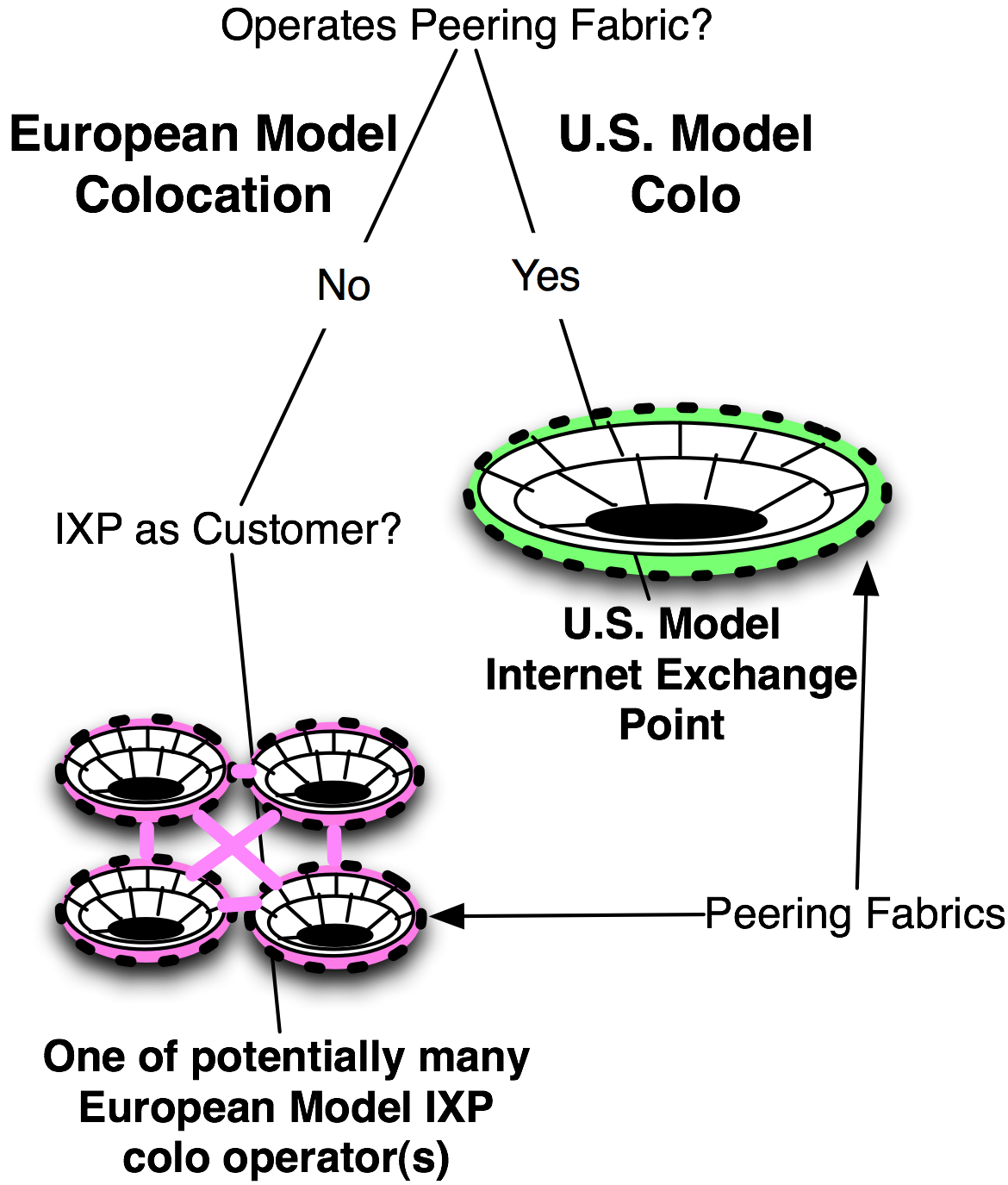Colocation Providers
Notes from the field.
Carrier and ISP and Colo Neutrality
When I first introduced Equinix to the European community at a RIPE meeting, they said, “But you aren’t neutral.”
“What do you mean? We are a carrier and ISP-neutral colocation center.”
“You aren’t “colo” neutral since you operate both the peering fabric and the colo. Your customers do not have a choice in colo providers.”
A Colocation Provider is primarily in the business of providing a data center for multiple interconnected networks.
Wholesale Colocation companies sell large amounts of data center space to other entities that in turn handles the retail colocation interconnection logistics. Often the wholesale customers are retail colocation companies that specializes on managing the value received by the retail customers. Wholesale providers don't generally get involved in interconnection issues between participants but rather sell the real estate.
There are generally two models for retail colocation providers – those that also operate a peering service (also known as the “U.S. Peering Model”) and those that house a peering service that is operated by someone else (also known as the “European Peering Model”). This litmus test is shown in the taxonomy drawing in Figure 12-18. I also like to call the European Peering Model the “LINX” model because this model was developed by the LINX and mimicked across Europe from there.
Next we will highlight the key differences between the European Internet Exchange Point Model and the US Internet Exchange Point Model.

Figure 12-18. The U.S. vs. European IXP models.

